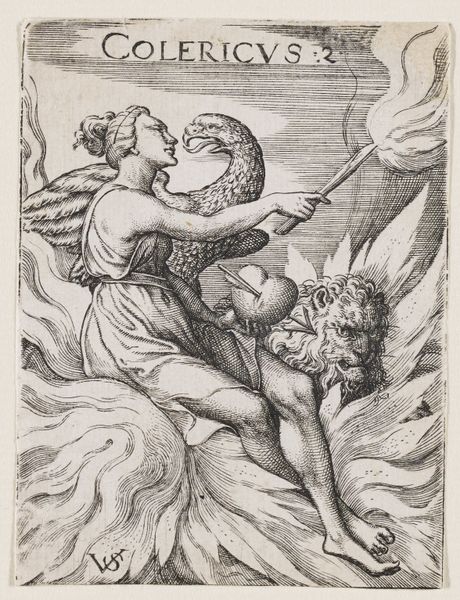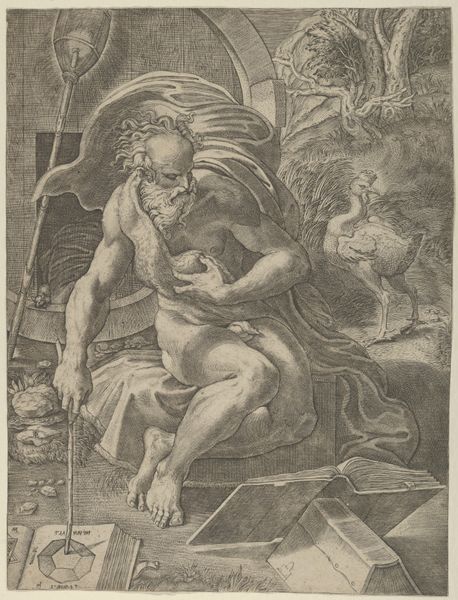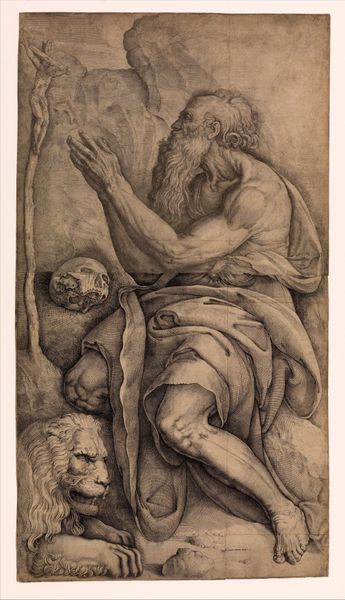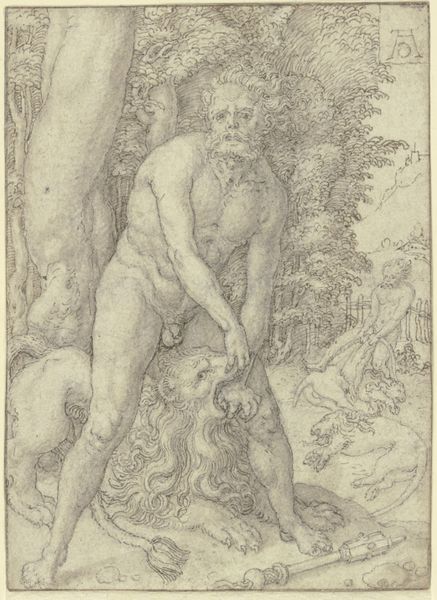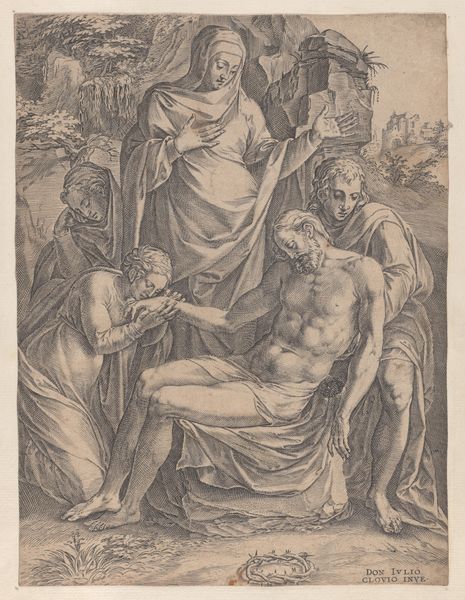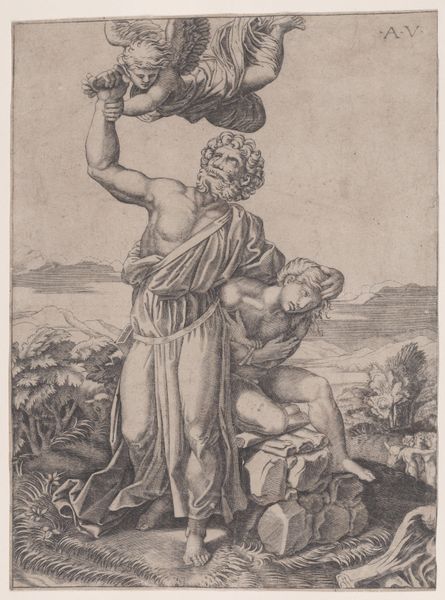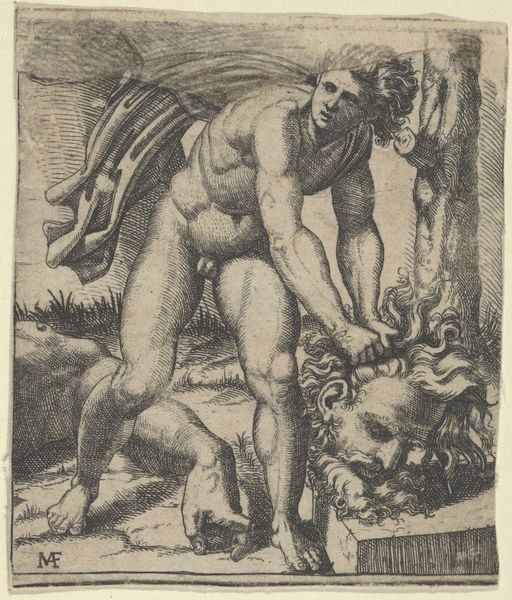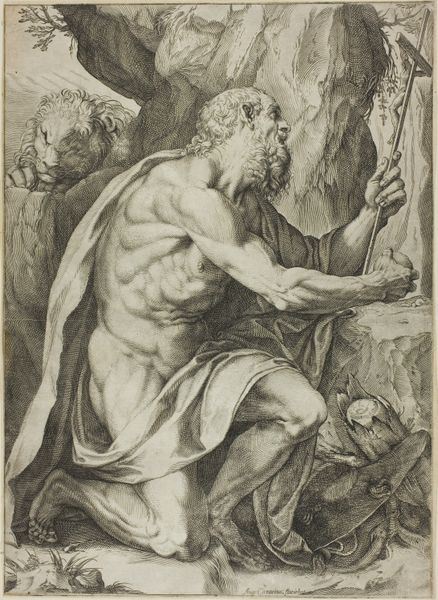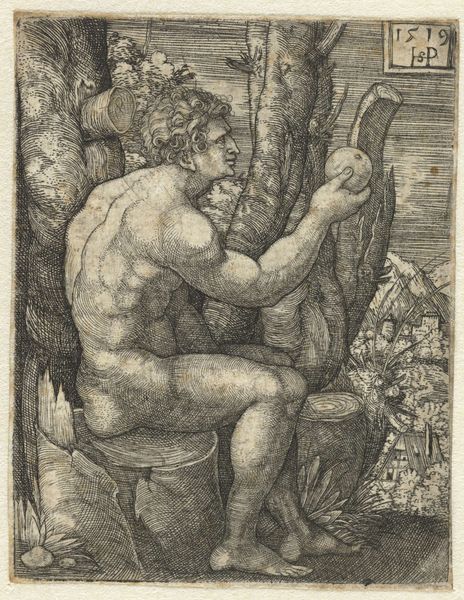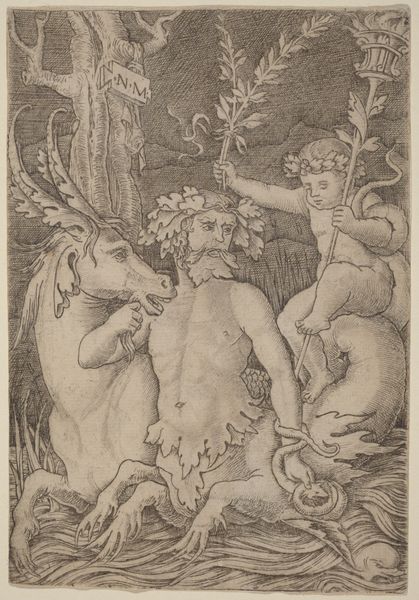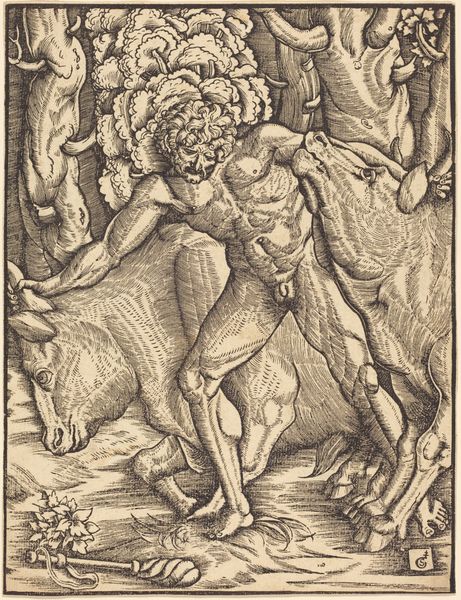
drawing, print, engraving
#
portrait
#
pencil drawn
#
drawing
#
toned paper
#
facial expression drawing
#
light pencil work
# print
#
pencil sketch
#
figuration
#
pencil drawing
#
pen-ink sketch
#
portrait drawing
#
pencil work
#
history-painting
#
italian-renaissance
#
engraving
#
pencil art
Dimensions: height 161 mm, width 133 mm
Copyright: Rijks Museum: Open Domain
Editor: This engraving, "Heilige Hieronymus," by Battista Franco, dating from 1520 to 1561, is quite striking. I’m fascinated by the intricate lines and shading. The figure seems so pensive, almost weary. What strikes you about the composition? Curator: Indeed. Notice how Franco uses hatching and cross-hatching to define form and texture. The light falls strategically to highlight the musculature and drapery. It’s a testament to the artist’s skill in manipulating line to create depth. Do you observe any particular rhythmic qualities? Editor: I see the way the lines curve around the figure and even in the lion’s mane, there's a circular motion. Curator: Precisely. The artist uses line to create form and to convey movement, a sort of visual cadence. Also, examine the figure's pose, the gesture of the hand supporting the head. It establishes a clear diagonal axis, bisecting the composition, with strong directional implications. Consider the tension between the linearity of the engraving and the three-dimensionality it attempts to represent. Is there something incongruous about this juxtaposition? Editor: It's almost like the figure is emerging from the very lines themselves, the lines building and constructing form! That's brilliant. I never really considered line that way before. Curator: Thinking about how an artwork functions structurally, and how meaning arises from form, provides tools for interpreting works, old or new. Editor: I think that's something I'll carry with me when analyzing other artwork going forward! Thanks for your insight.
Comments
No comments
Be the first to comment and join the conversation on the ultimate creative platform.
